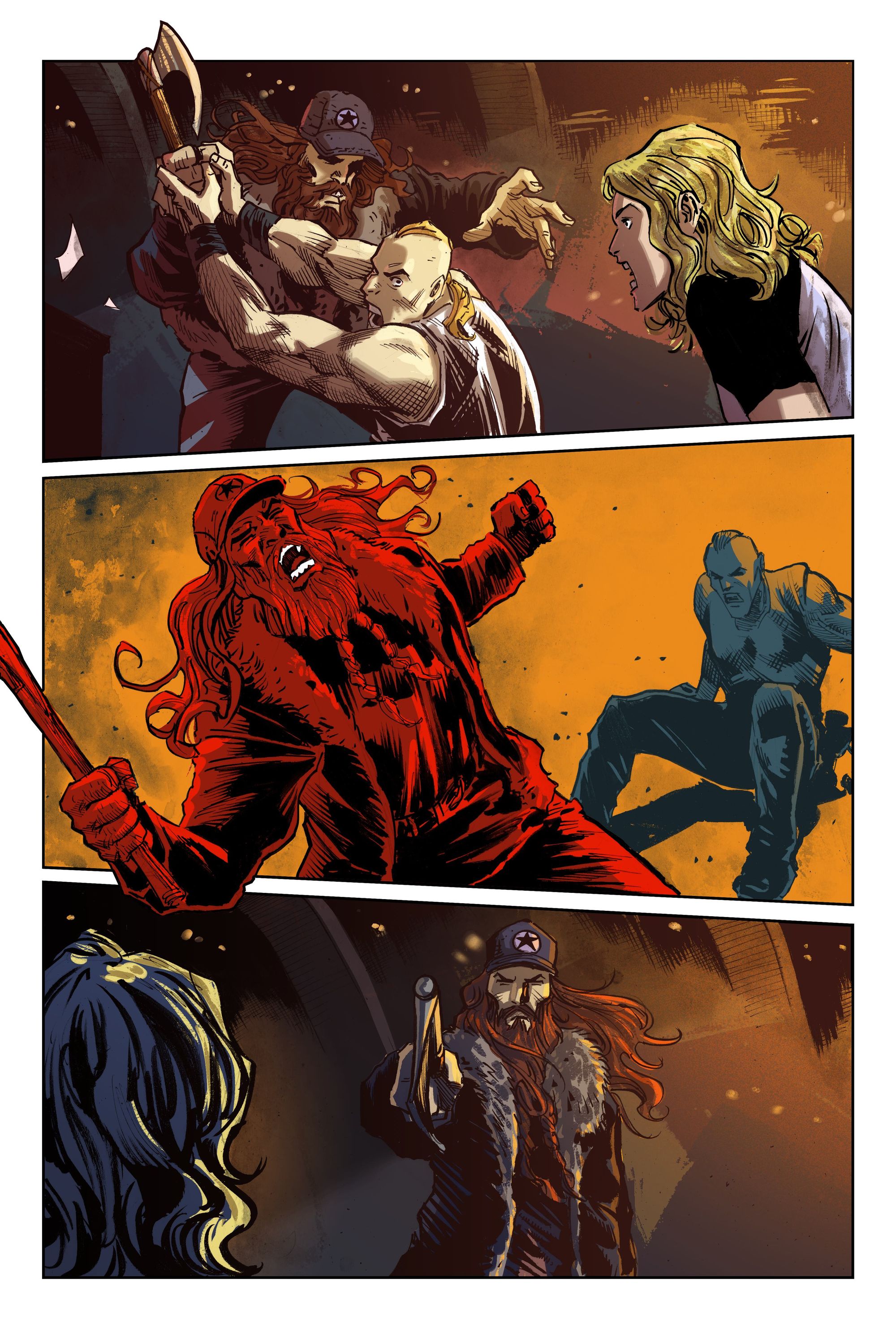
Verge: Screenplay to Comic
Writing is a hard gig.
But writing for the screen has an added factor that hurts just a bit more. When you’re writing a book and you type those final words "THE END" (optional question mark), you have a book! It’s a complete product, and even if it doesn’t set the world on fire, you can still self-publish, give it to family and friends, and put it on your shelf at home.
But when you write a script, if it doesn’t get produced (and 99% of scripts don’t), it remains as just that. A template. Something that might only be read by other screenwriters.
That’s the position I found myself in 2016 when I wrote a TV pilot called Verge.
The premise was awesome. Refugees from the past time-travel to present-day New York City, where they live in these crazy, melting-pot communities of Vikings, Samurai, Romans, Cavemen, and so many others, and it’s up to the NYPD to keep the peace across these different cultures. The main character is Homicide Detective Connie Liu, who is investigating the murder of three Samurai. The case starts to sprawl, pulling in all the other refugee groups and threatening to expose Connie’s secret past as the last princess of China.
Sounds amazing, right?
Sounds expensive, too.
I pitched it to a lot of producers, production companies, and networks, and never got a hard pass. Everyone agreed it was a great concept. But the cost was prohibitive, and I was an unknown writer, pitching something without the security of an existing IP attached.
So, Verge remained as a script.
The world I had written was so visual. I could picture the Vikings setting fire to a funeral boat and sending it out past the Statue of Liberty. I could see the Samurai building great temples inside city blocks, where they shut out the modern world. I could imagine the Cavemen, painting modern scenes on the walls of subway tunnels, trying desperately to understand this new world. And I could see these groups interacting with each other, changing, adapting to the modern world or rejecting it, fighting for their own slice of the American dream.
It was so frustrating that this extremely visual world would exist only within the pages of an unproduced script.
That’s when I got the idea of creating a graphic novel. To be clear, producing a comic is not a cheap exercise, but filling it with crazy action scenes and time-traveling people from the past doesn’t cost you more in the same way it would on the screen. Drawing a page of art costs the same for each page, so there’s no limit to what can fill those pages.
I think that’s why comic books have created so many memorable images, and why Hollywood has jumped in so deep with the comics industry and community.
With Aussie artists Marcelo Baez on line art and Louie Joyce on colours, I made a sample issue and sent it to as many comics publishers as I could. Red 5 wrote back instantly; they loved the idea and wanted to go straight to a four-issue series. I brought Silvio dB, a Brazilian artist, in to take over the line art, and we started work, on track for September 2020 release.
Silvio’s art was fantastic, he really researched the world and put that on the page. He would send me pictures of temples to work out which period of Japanese architecture the Samurai refugees would use. Louie’s colours complimented Silvio’s work perfectly, the guy lives and breathes colour and knows exactly how to direct the reader’s eye with a splash of some anachronistic shade.
Things were going well, and the art was rolling in on a daily basis. Then—COVID. Brazil was hit particularly hard, and Silvio found himself unable to keep up with the work, so Red 5 and I agreed to push the release back to September 2021, and I brought in Filipino artist Dexter Wee to help out. Getting Dexter was a real coup, he had just completed work on The Führer and the Tramp, which was nominated for an Eisner Award, the biggest award in comics. Whereas most artists these days work digitally, Dexter still rocks the ink and paper. His art is less realistic than Silvio’s, but full of emotion and drama. It’s not ideal to change artists halfway through a series, but I really believe that the two artists work together in a unique way.
20,000 words, 664 panels and 113 pages later, and I had four completed issues of Verge. The first issue was released on September 29th, with a new issue coming out each month and a collector's edition getting released for Christmas.
Sales have been great, the reviews were glowing, and the publisher was happy. But what made it worth it for me was that this world that had existed only in my head had come to life in vivid colour. It felt unreal to hold the pages and see it, and I felt so proud putting it on my bookshelf. My wife and I had a baby while I was producing this comic, and the thing I look forward to most is reading the story to him one day (when he’s a fair bit older—there’s some blood and swear words).
I hope I have in no way come across as an expert. I’m not. This was all new to me and any advice I can offer is as someone who’s just opened the door and gotten a foot inside a rich and incredible creative world.
Writing for comics is different to any other medium. It’s very wrong to think about comics as being like a storyboard, as I’ve heard some people say. You have a series of snapshots in the form of panels, and as much meaning as possible has to be conveyed in one. The brain then connects these panels together, and as much meaning can come from the gaps between the panels as is in the panels themselves.
Sexism and toxicity in the comics community has gotten a lot of attention recently, and there’s a long way to go. The history of comics is full of absurdities like Power Girl’s Boob Window, Superman cheating Native American Tribes out of their land, and the concept of ‘fridging’ comes from a Green Lantern comic. But there’s also a growing number of minority comic creators and fans who are reinventing the medium in really interesting ways.
I’ve been amazed at how engaged and supportive the comic book community is; it’s not hard to find your people here.
On the business side of comics, it’s not a secret goldmine. Most new comics hope to just break even on their way to building an audience. Adding to this, the deals publishers offer to writers have increasingly pushed the risk onto them, while compensating them by allowing them to hold onto their IP. But if you’re realistic about the business side of things, I think the comic world has a lot of opportunities to offer writers.
Verge is available at Red5.
Listen to Bryce talk about his adaptation on Symposium's podcast!
*Feature Image: panel from Verve #1 (Red5)
